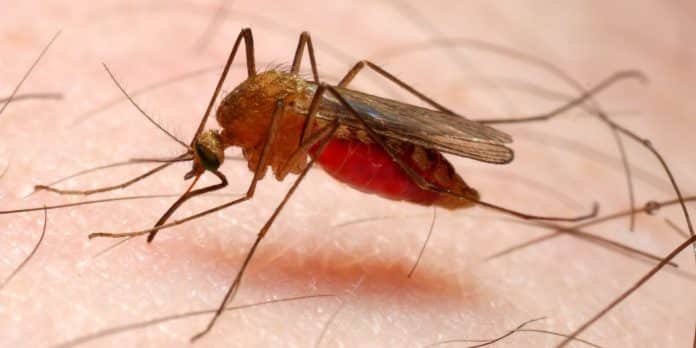Malaria Foments Distinct Odour in the Infected to Attract Other Mosquitoes and Boost Transmission
Malaria parasites (Plasmodium) can change the attractiveness of their vertebrate hosts to Anopheles vectors, leading to a greater number of vector–host contacts and increased transmission. Indeed, naturally Plasmodium-infected children have been shown to attract more mosquitoes than parasite-free children.
In a new study, researchers at the London School of Tropical Medicine have demonstrated how children infected with the malaria parasite Plasmodium were found to produce distinctive skin smells making them more attractive to malaria mosquitoes than uninfected children.
Researchers have identified this unique chemical fingerprint for the first time, opening up the possibility of developing a system to lure mosquitoes away from human populations, or diagnosing the disease.
The team went through the investigation by testing a larger number of people outside a lab, and by dissecting body odors to see which chemicals matter to mosquitoes.
The socks of 45 Kenyan schoolchildren, some infected by malaria, played a key role. To see whether mosquitoes preferred the smell of people with malaria, the scientists placed socks the children had worn in a contraption of two boxes joined by a tube. They put mosquitoes into the tube and tracked which sock they flew
toward.The bugs showed a preference for socks worn by infected children. When given a choice between those and socks worn by the same child 3 weeks later after medication had wiped out the infection, 60% of the mosquitoes flew to the infected socks. The mosquitoes showed no preference between two pairs of socks collected at different times from children who never showed a sign of malaria.
To understand this difference the team analysed the chemical make-up of all 117 odour samples and found the malaria group were particularly high in a group of chemicals compounds called aldehydes.
Significantly, the children who had the highest levels of the malaria-causing plasmodium parasite had particularly high levels of the key aldehyde compounds in their sweat.
“This is the first time that the skin odour of people naturally infected with malaria has been studied,” said the study’s lead author, Dr Ailie Robinson, from the London School of Hygiene & Tropical Medicine (LSHTM).
“We have shown that in people with malaria, the production of key volatile chemicals by the skin is altered, and this new ‘infected’ odour appears to be more attractive to mosquitoes.”
The researchers hope that the compounds associated with the presence of malaria parasites in the blood could be used as biomarkers of infection.
“There’s a great need for development of new noninvasive diagnostic tools,” said Professor James Logan, senior investigator on the study and head of department of Disease Control at the London School of Hygiene & Tropical Medicine. “Using odors to detect the presence of malaria parasites could be such a novel method. It is important to diagnose carriers of malaria parasites even if they don’t feel sick (enough) to visit a clinic.”
This could take the form of a smartwatch that detects infections in sweat, alerting the wearer to infection in real time, he suggested.
The team further plans to continue tweaking their research on mosquito bait traps that use aldehydes. If we can understand how to block mosquitoes from smelling these aldehyde chemicals, they say, we might be able to break new ground in the development of better mosquito repellents.






























